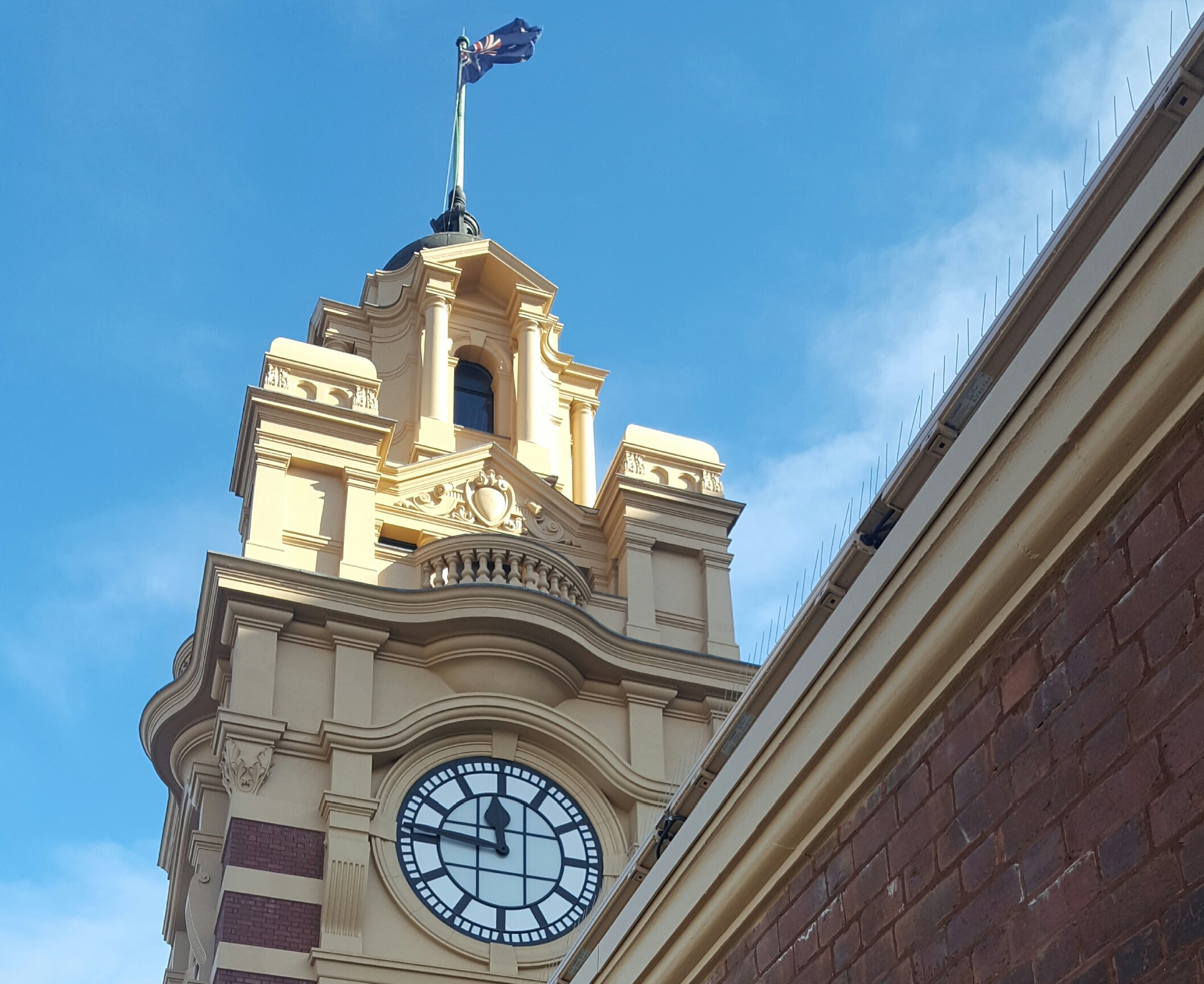A landmark and heritage listed building, Melbourne’s iconic Flinders St Station has undergone a much-needed revitalisation.
Not only a proud Victorian landmark, this redevelopment is also a celebration of true craftsmanship with upgrade works including the use of old artisan and highly specialised techniques, rarely seen these days.
The Victorian Government invested one hundred million dollars over four years into the redevelopment of this iconic building, with works expected to be completed later this year.
A century-year-old building, many of the works could not be completed by everyday modern machinery, with each artisan playing a vital role in the redevelopment, using intricate and specialised techniques.
Some of the many upgrade works has included the repairing and restoration of the façade, roof, heritage clock tower, replacement of windows, repainting of the building and the replacement of approximately eight thousand tiles; as well as the restoration of old tiles.
A proud Local Jobs First project, this project has generated wonderful opportunities for local Victorian businesses, as well as the revitalisation of old artisan trades.
One example is the work undertaken by the talented tilemaker, Ettore Puricelli. Ettore Purricelli restored approximately eight thousand tiles on the project. Each tile handmade, taking approximately eight weeks from start to finish to complete.
A delicate process which took a lot of patience and effort, Ettore Purricielli said, “This is a very rewarding project, not only for me but for everybody”.
Part of the metal work upgrades, including the building of the iconic Flinders St acroterion, involved nothing but the use of hand and foot operated machinery, without the use of electricity – a rare occurrence in today’s day and age.
With more than seven hundred windows in the building, a lot of time and effort was also spent restoring windows, ensuring each was cut with precision and fitted with glass to match the building’s interior and exterior.
Stained glass restorations involved extremely intricate handmade details, with the glass then fired in a kiln, keeping in line with the heritage and feel of the building.
The restoration of bricks on the project involved the repainting and use of black lines amongst the mortar joints, a classic reminder of the Edwardian style of the era and one no longer commonly used.
Local Jobs First Policy is providing workers like artisans opportunities to participate in small and large government projects similar to the Flinders St Station redevelopment, as well as rejuvenating old artisan trades and enabling the passing down of these rare skills to the next generation.
The success of the Flinders St Station redevelopment has seen many of the SME’s who participated on this one of a kind project, in demand for other heritage projects in Victoria and interstate, most recently in the redevelopment of the State Library of Victoria.
Local Jobs First Commissioner, Don Matthews visited the Flinders St site earlier this year, praising the redevelopment works and its support of local businesses. He said, “It’s great to see Local Jobs First making a difference to businesses and workers, especially on such an iconic landmark such as Flinders St Station. It was extremely pleasing to see artisan trades being brought back to life through this exciting project. Being able to showcase the artisans work and the processes involved is terrific. To see these artisan trades being used in other projects, not just in Victoria but interstate is highly satisfying. Watching local businesses thrive and participate in more Government projects, is what Local Jobs First is about. We are committed to supporting local businesses and using Victorian-made products.”
An advocate for local content and industry, Don Matthews is committed to engaging and working in collaboration with industry and government agencies to provide greater opportunities for small and medium-sized businesses on government projects.
Read more about the Flinders St redevelopment on the Victorian Connection.
